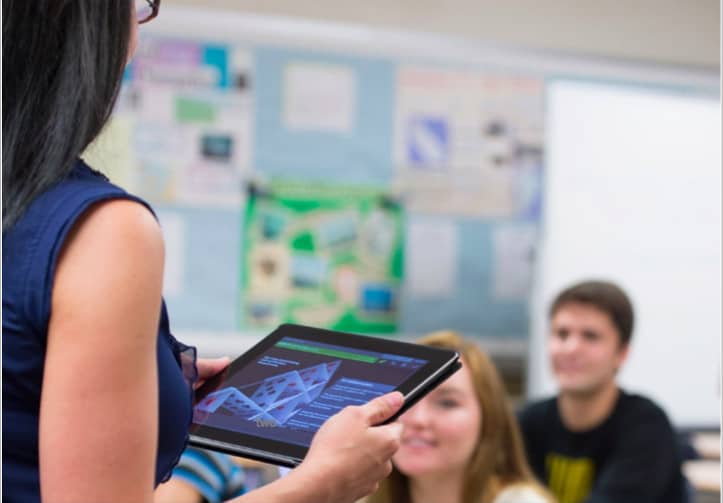Interaction With Digital Content: 5 Actions to Look For In Your Students’ Online Experience

A key component to any blended learning implementation plan is to identify the platform and curriculum that will best support your goals and best align with your strategy. As we enter into an increasingly digital world, where students are spending more and more time online, it is critical that we ensure that this time is relevant, engaging and meaningful. Active, blended environments offer students an online experience that requires them to engage in meaningful, authentic tasks.
Online lessons should not assume students as passive listeners who are merely consuming content, but instead create learning opportunities with students as active participants in the learning experience. We asked our friends at Apex Learning, how they ensure they are creating curriculum that supports active learning and they pointed out that it comes down to what the students are doing online. Are they observing, inquiring, creating, connecting and confirming? Content should help students build anticipation for knowledge and should require analysis and critically thinking.
Wondering if your students are getting the most out of their online experience? Watch and listen for what sort of work is being asked of them. Below is a list of key verbs that signal active engagement. Is digital curriculum asking students to:
- Observe. Look at this. What do you see? What’s different? What’s the same? Are there patterns? Find objects, information and words. Observing can happen with images, charts, graphs, maps and text excerpts. Observing is very similar to exploring. It can be freeform or focused. It can allow students to see and discover different things, or it can encourage them to seek out something in particular. Observing happens naturally when curiosity is present. In academic settings, curiosity may have to be generated in the teaching for observation to feel real and legitimate.
- Inquire.What do you wonder? What questions do you have? What information are you looking for? What information should you look for? Reflect.
- Confirm. Get answers to your questions. Show me how that works. Help me check my work. Make sure you’ve got it. Say it in your own words. Summarize what you know. Check your facts. Check your understanding. Check to see if your prediction was accurate.
- Connect. What are the relationships between these things? Are there categories and subcategories? Is this related to my life or to something else I’ve studied? Is this claim supported by the information? What parts make up this whole? What’s it like? What’s it not like? Can I analyze it?
- Create. Try it. How would you solve this problem? Make or say something that hasn’t been made or said before. Write, compose and draw. Synthesize. Express. Imagine: What if?
When it comes to digital instruction, we can’t allow this to be an online version of bad teaching. What we need is online tools and resources that support the strategies and best practices for teaching that we have long known to be true. If your digital curriculum is simply digitizing your textbook, then you are missing out on the opportunity for genuine personalization, active engagement and increased outcomes.
For more on how to create an engaging and connected online experience for your students in whichever way you learn best:
- READ: Realizing The Potential of Blended Learning: Beyond Personalized to Active Learning
- WATCH: The Next Generation Blended Classroom Webinar
- ENGAGE: Join one of the upcoming Blended Learning Conferences
Stay in-the-know with all things EdTech and innovations in learning by signing up to receive the weekly Smart Update. This post includes mentions of a Getting Smart partner. For a full list of partners, affiliate organizations and all other disclosures please see our Partner page.







0 Comments
Leave a Comment
Your email address will not be published. All fields are required.